

Max Davies
2025 Toyota Corolla SX review
6 Days Ago
Ford's flagship Escape is chasing premium rivals. Does the Blue Oval have what it takes to be in the same league?

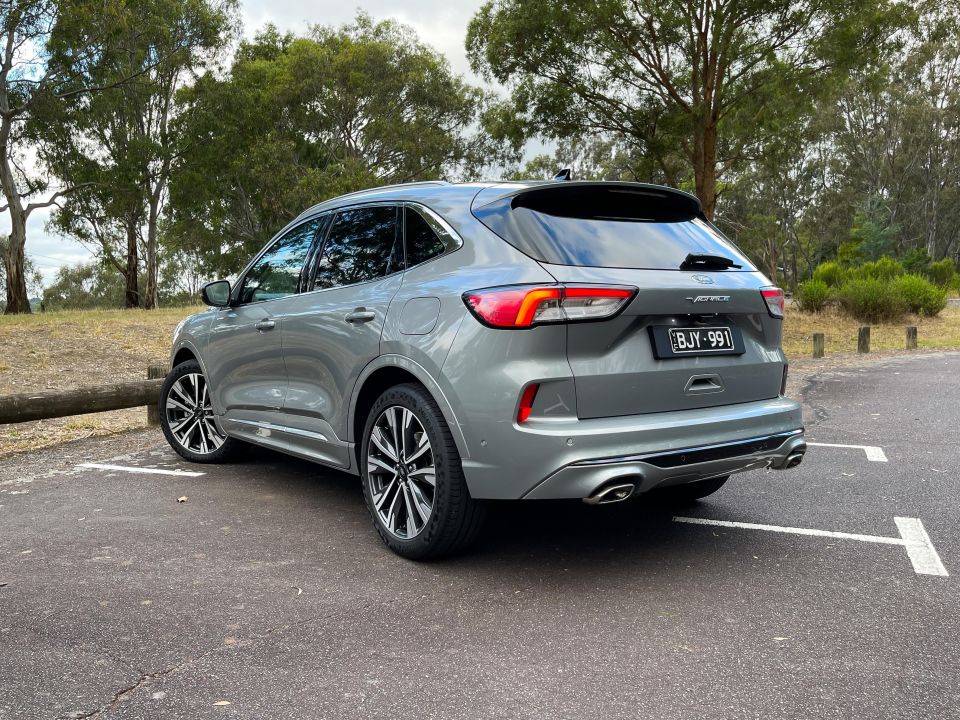

Marketplace Editor
New from
$35,990
excl. on-roads

Marketplace Editor
New from
$35,990
excl. on-roads


Marketplace Editor
New from
$35,990
excl. on-roads

Marketplace Editor
New from
$35,990
excl. on-roads
Quickly see how this car stacks up against its competition. Select any benchmark to see more details.
Where expert car reviews meet expert car buying – CarExpert gives you trusted advice, personalised service and real savings on your next new car.
The newest Ford Escape aims to make the Blue Oval a more prominent player in what is Australia’s biggest and most competitive new car segment.
At CarExpert we’ve now sampled the value-driven Escape FWD base trim, the sporty ST-Line mid-ranger, and now we’ve arrived at the top of the tree – Vignale.
What’s a Vignale? Well, previously Ford flagships wore the Titanium badge, but the Vignale specification has existed in Europe for years, named after a former Italian coachbuilder to which Ford owns the rights.

The Blue Oval has described the new Ford Escape Vignale as ‘lavishly equipped’ and says the top trim focuses on ‘premium elements’. With that pitch and the Vignale’s high-$40,000 price point, it looks like Ford is gunning for high-grade mainstream and entry-level premium rivals.
Let’s not forget the Escape hails from Spain, and in its home region Ford’s European products tend to be held in the same regard as Volkswagens.
Does the Escape Vignale live up to its premium aspirations? And, is it worth the spend compared to a top-spec Mazda CX-5/VW Tiguan or perhaps a base Audi Q3?
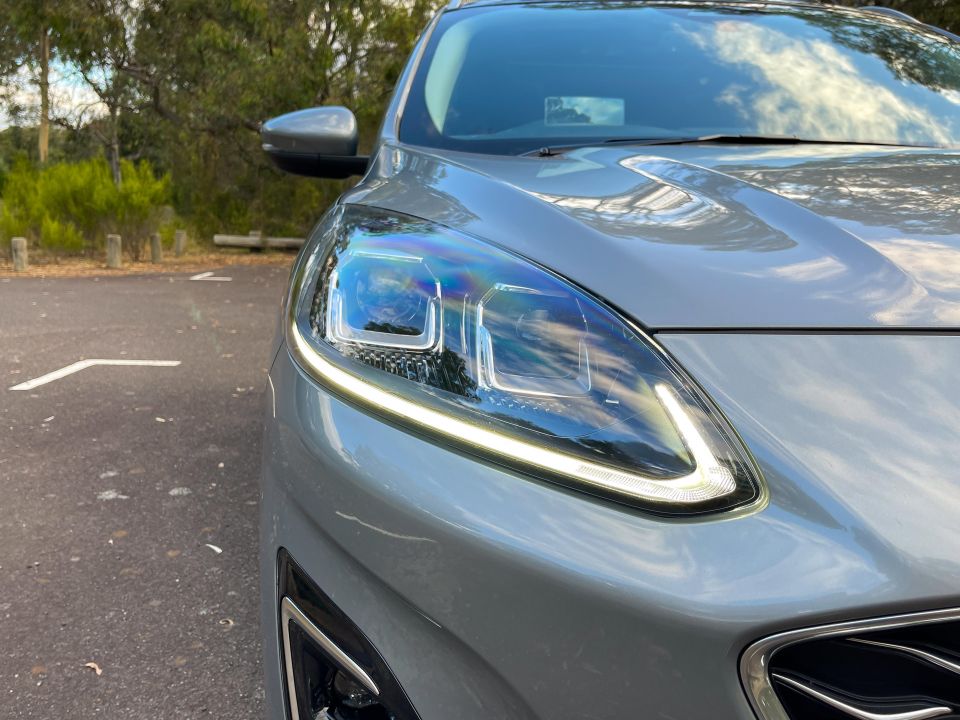
The Ford Escape Vignale starts at $46,590 before on-road costs for the front-wheel drive model on test, with all-wheel drive available from $49,590 before on-roads.
The Escape Vignale is priced against competitors such as the Mazda CX-5 Akera 2.5T ($50,830 list), Toyota RAV4 Cruiser Hybrid ($43,415 list) and facelifted Volkswagen Tiguan 162TSI Elegance ($50,790 list) to name a few.
Nearing the $50,000 mark also puts the flagship Escape against premium-branded vehicles like the Audi Q3 35 TFSI ($46,950 list), BMW X1 sDrive18i (from $47,900 list) and the Volvo XC40 T4 Momentum ($46,990 list).
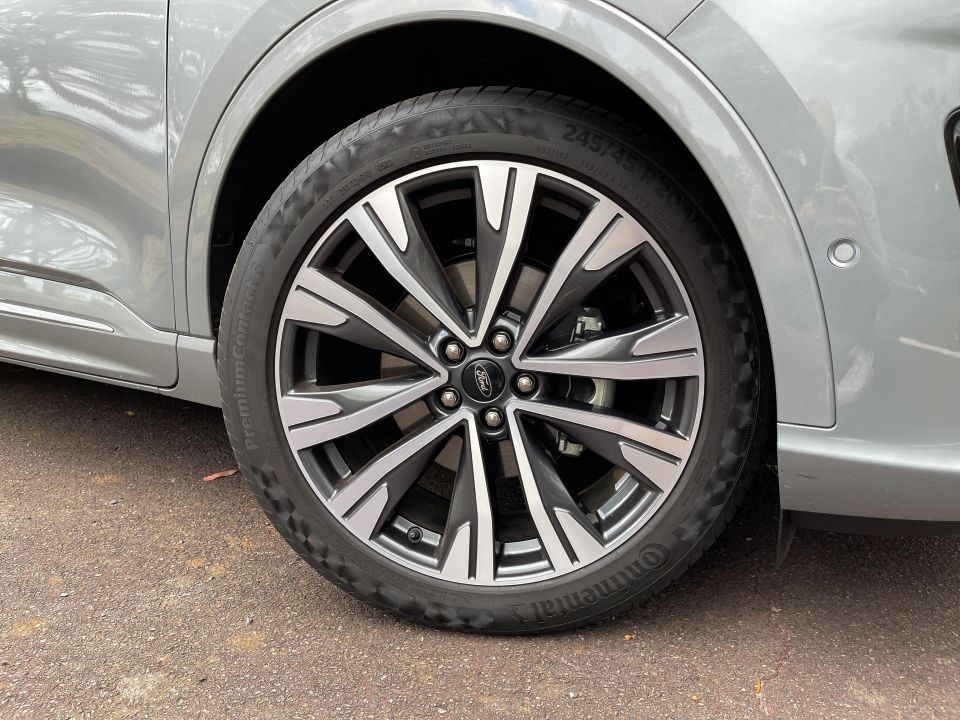
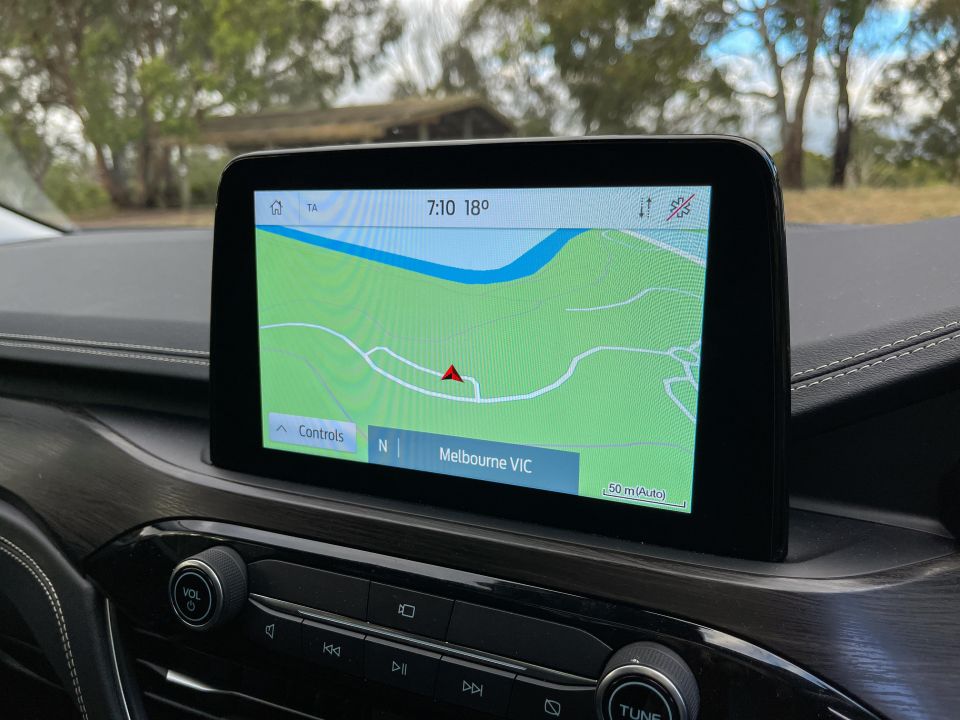
Buy your new car without the stress. It's fast, simple and completely free.

Great service from Travis and team, second time I have used this business would not hesitate to recommend them to anyone
Craig C.
Purchased a Ford Ranger in Sunshine Coast, QLD
CarExpert helped Craig save $7,224 on his Ford Ranger, now let us save you on your next new car.
Get your BEST priceThe Ford Escape Vignale features the following equipment highlights:
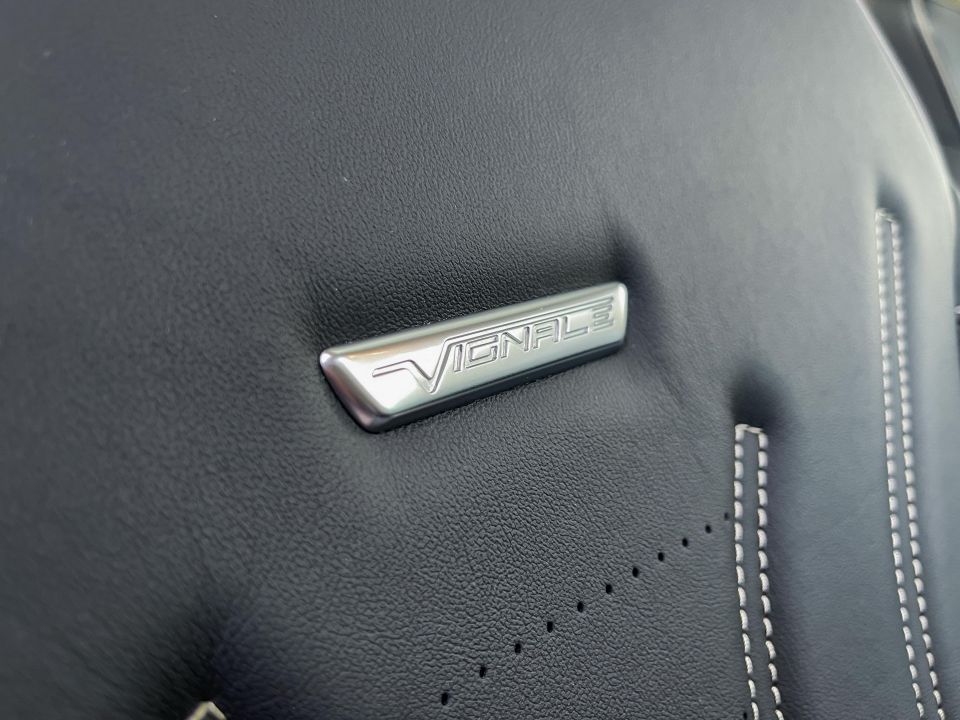

That’s on top of specification carried over from lower trim levels:
Our test vehicle is optioned with larger 20-inch alloy wheels, which ask for an additional $500, as well as Solar Silver prestige paint ($650).
While we’ll cover powertrain in the dedication sub-section of this review, it’s worth noting the Ford Escape comes as standard with one of the most powerful engines in its class – a 2.0-litre turbo four outputting 183kW/387Nm.

The Escape was recently awarded a five-star safety rating in 2019, based on tests conducted by Euro NCAP last year.
The Escape scored 92 per cent for adult occupant protection, 89 per cent for child occupant protection, 82 per cent for vulnerable road users and 77 per cent for safety assists.
ANCAP praised the Escape’s AEB performance, particularly for pedestrians and cyclists. Dual frontal, side chest-protecting and side head-protecting (curtain) airbags are standard on all Escape models.
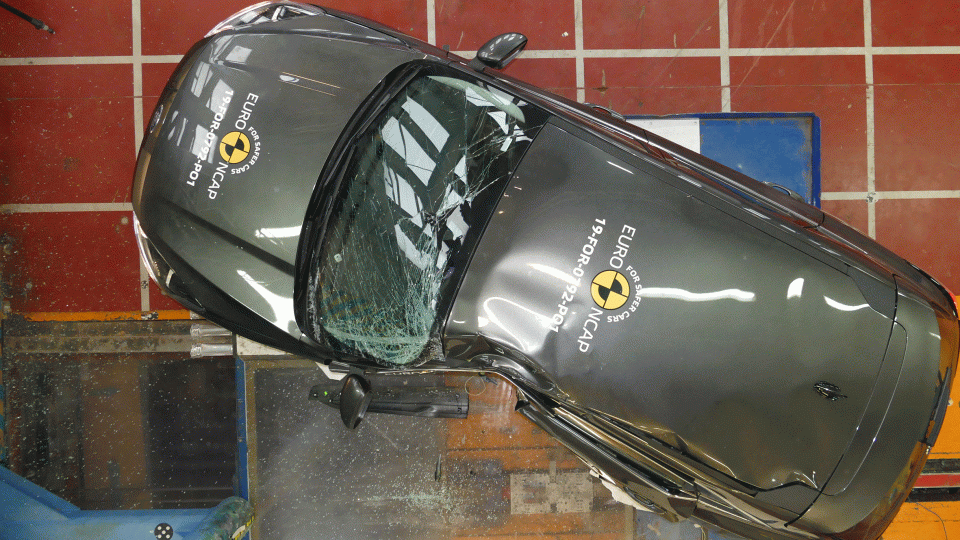
The entire range is equipped with autonomous emergency braking (City, Interurban and Vulnerable Road User), lane-keeping assist, lane departure warning and emergency lane keeping.
Our Vignale tester adds niceties like a head-up display and adaptive LED headlights as standard equipment.
Other standard driver assistance technologies include traffic sign recognition, blind-spot monitoring, driver impairment monitor, tyre pressure monitoring, emergency assistance, and adaptive cruise control with an intelligent speed limiter.
The Escape’s five-star rating applies to all petrol variants, while the plug-in hybrid is unrated for the time being.
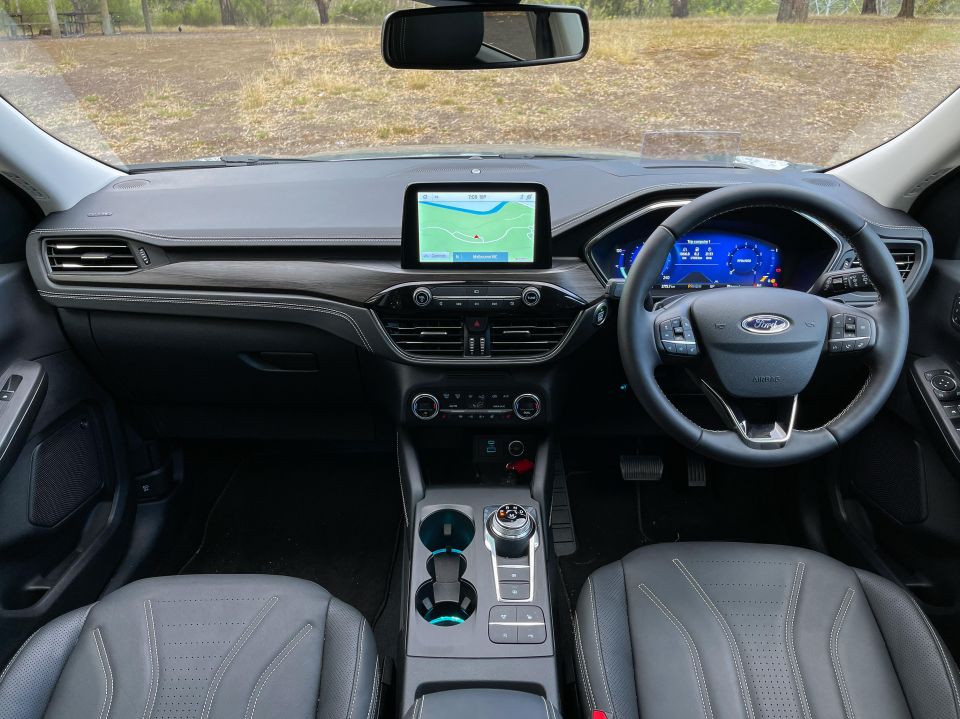
The Vignale justifies its $10,000 price premium over the base Escape FWD with a smattering of equipment, technology and trim upgrades, which do a decent job of making the Ford feel upmarket.
Key differentiators include the leather seats with contrast stitching and some interesting quilting, which also don ‘Vignale’ badging. The Vignale also nabs a leatherette dashboard cover with contrast stitching, and extra stitching on the steering wheel.
There’s wood-look inlays which are a nice touch, and like the mid-grade ST-Line the driver is faced with a 12.3-inch digital instrument cluster. A colour head-up display designed to work with polarised sunglasses is also a nice touch.
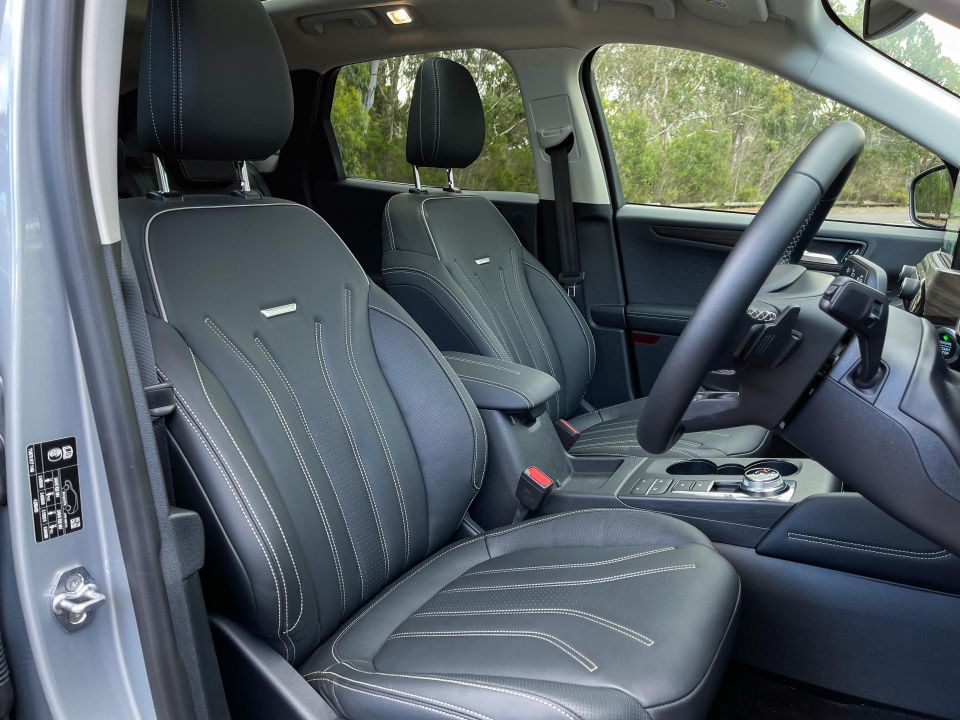
Beyond that, however, the Escape Vignale’s cockpit isn’t too different from the lower models. You still get a clean, upright dashboard, the same rotary gear selector, and the same 8.0-inch Sync 3 touchscreen with inbuilt satellite navigation and functions such as Apple CarPlay/Android Auto and DAB+ radio.
It all comes together well, but it’s still a little austere in a mainstream European way – sort of like some of Volkswagen’s interiors. There’s not really any ‘wow’ factor, a feeling echoed by numerous family members and friends who took a ride.
We also would like a bit more bolstering in the front seats – a common theme with the Escape. You’re perched quite high, and there’s not enough bolstering to keep you in place in the corners.
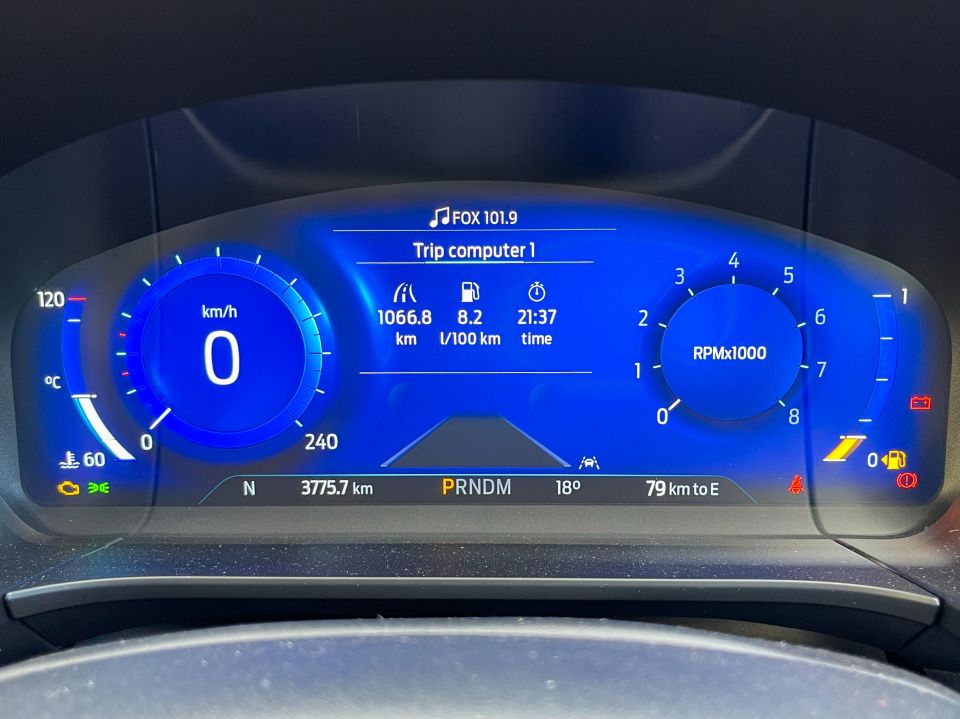
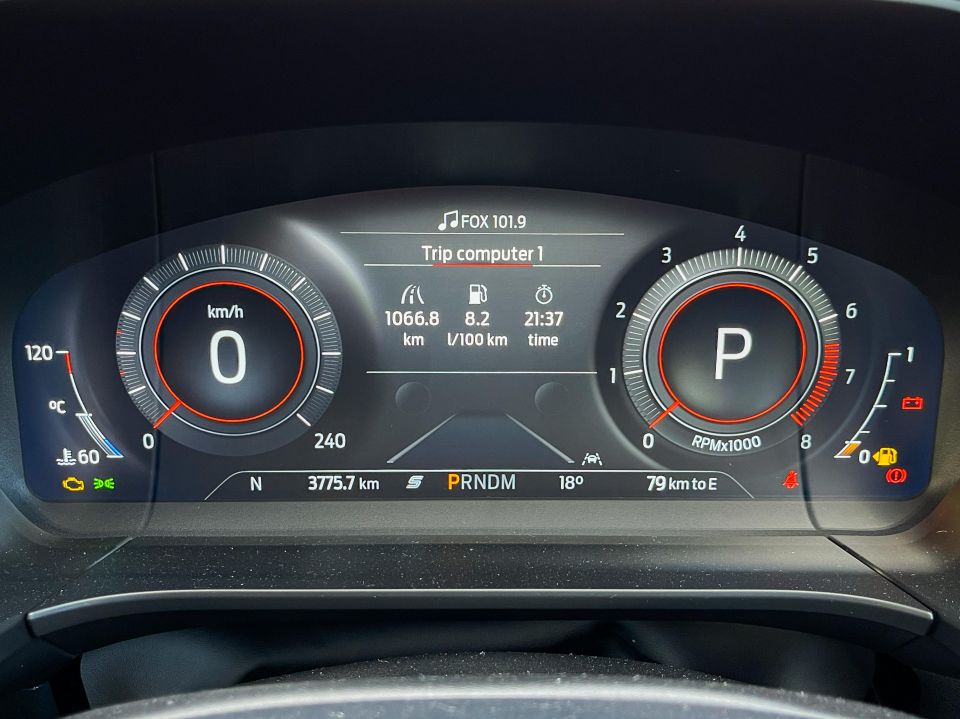
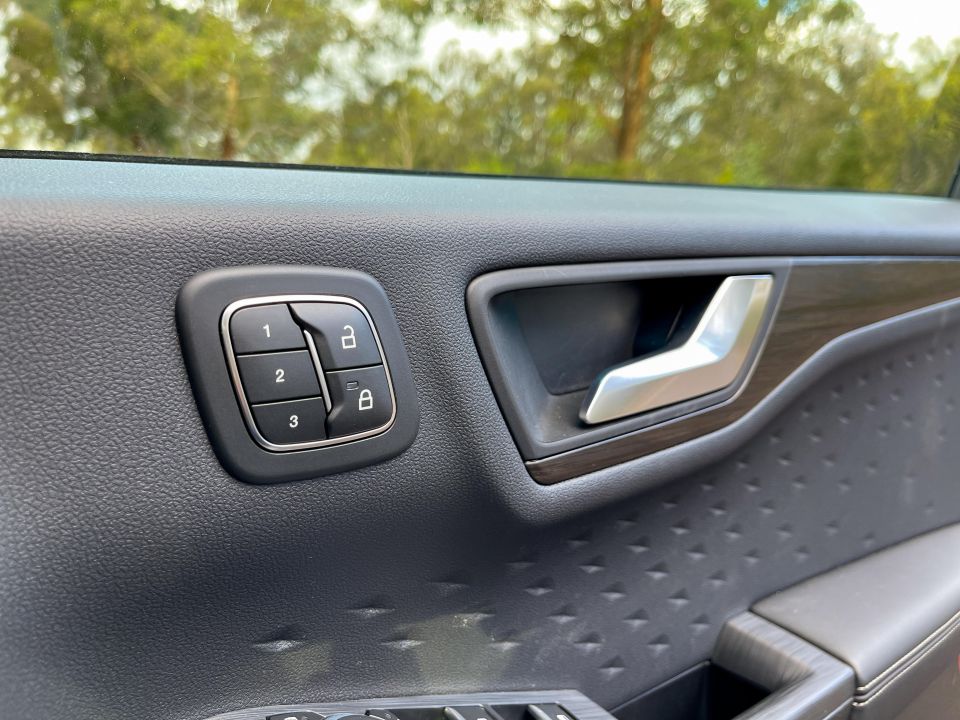
Given the Vignale features leather trim as opposed to the grippier fabric of lower grades, it can sometimes feel a little slidey.
In terms of material quality, the Escape’s upper and middle tiers are finished with soft-touch plastics, and unlike numerous competitors the back doors feature the same. There are some hard, scratchier plastics lower down but that’s par for the class.
Rounding out the first-row amenities are a wireless charge pad (my iPhone 12 Pro Max had constant issues keeping a consistent connection), decent storage in the door bins and under the front centre armrest, heated front seats and a heated steering wheel (which is why the indicator stalk in Vignale models is on the left), and dual-zone climate control.
It’s all ‘nice’ without being a real standout compared to the segment.
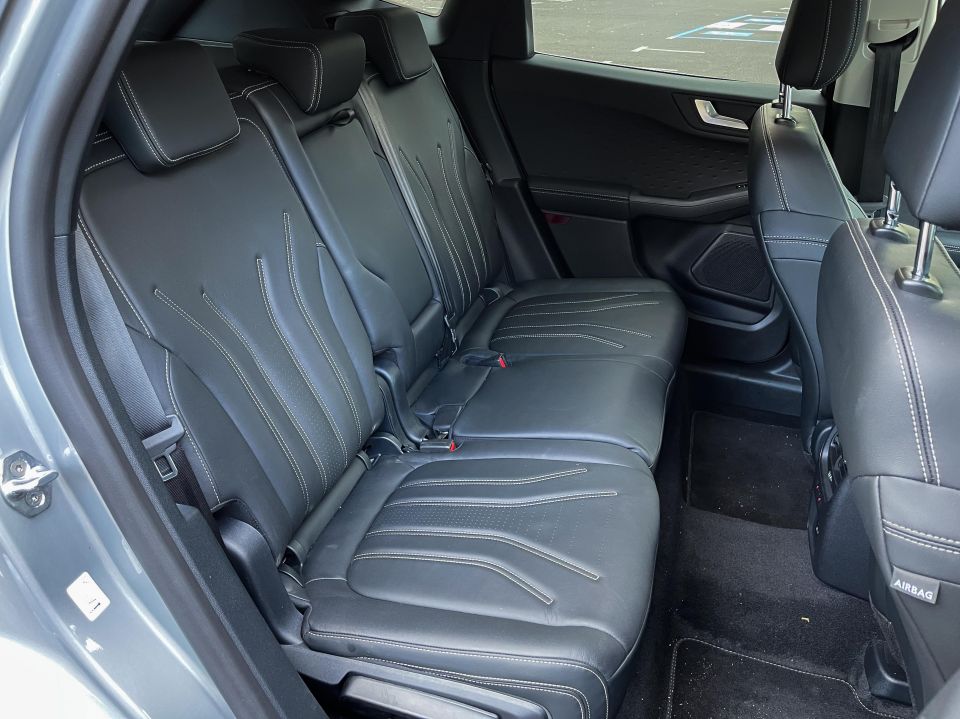
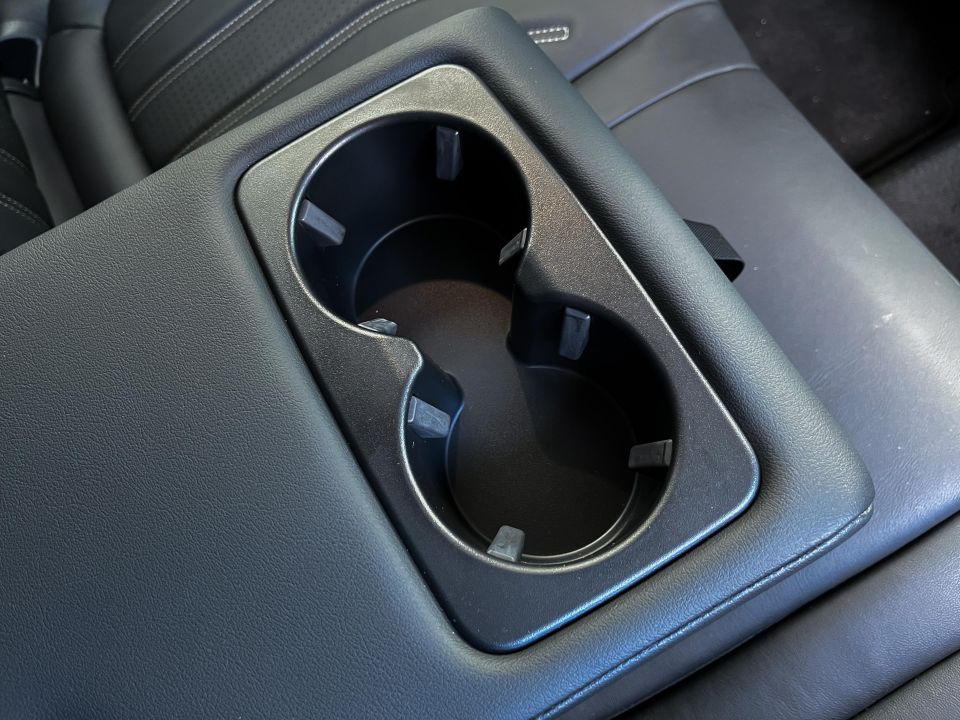
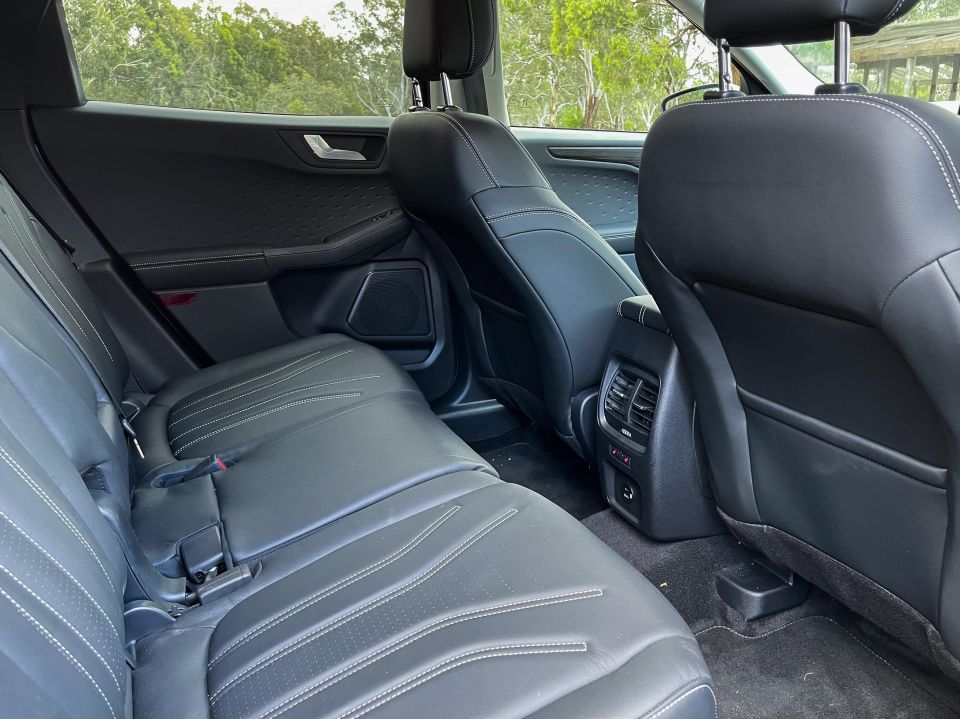
The Escape fares better against rivals in the second row, where it offers accommodation right up there with the best in the segment.
Leg- and headroom is very good even for taller passengers sat behind a taller driver like myself, and there’s family-friendly features like air vents, map pockets, a fold-down armrest with cupholders, heated rear seats, and a sliding second-row bench so you can either maximise passenger room or luggage space.
Parents can make use of the ISOFIX child seat mounts on the outboard positions as well as the three top-tether points across the second row, and there’s bottle holders in the doors too.
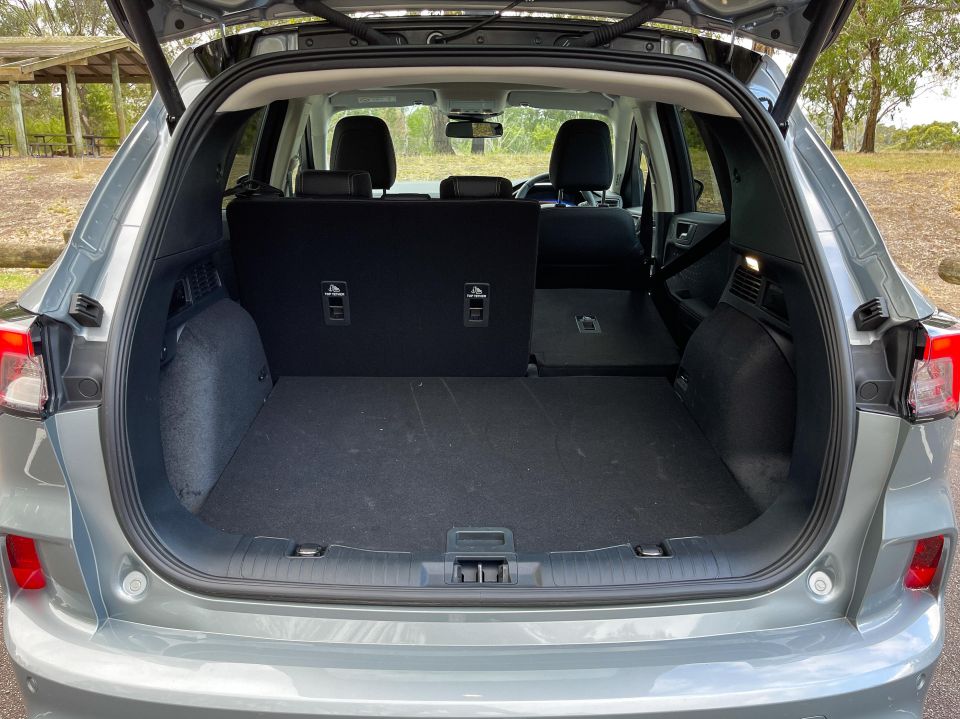
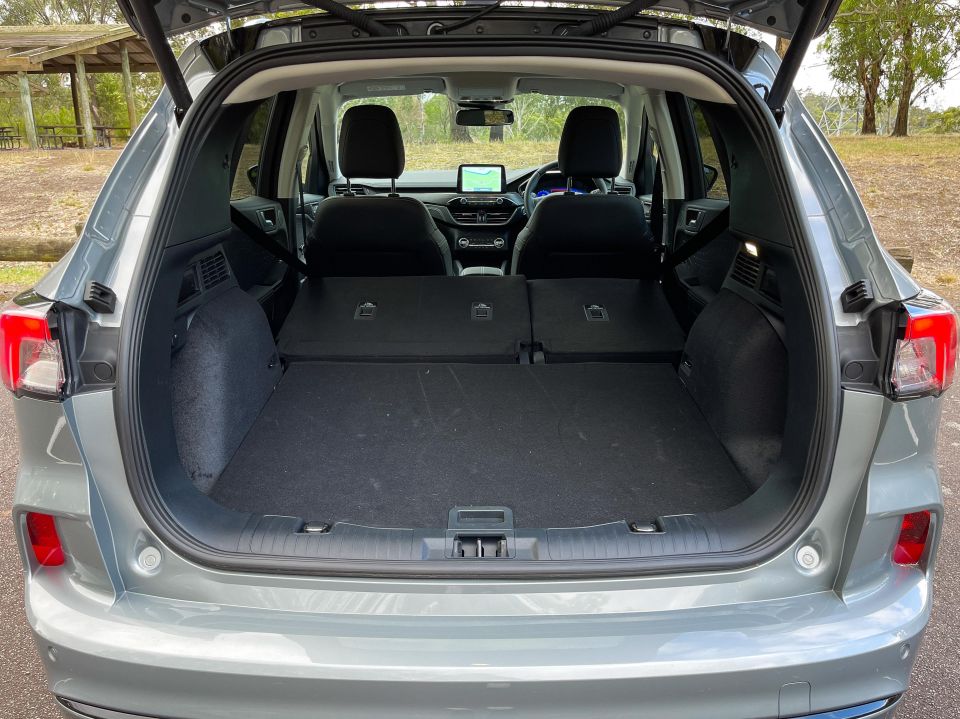
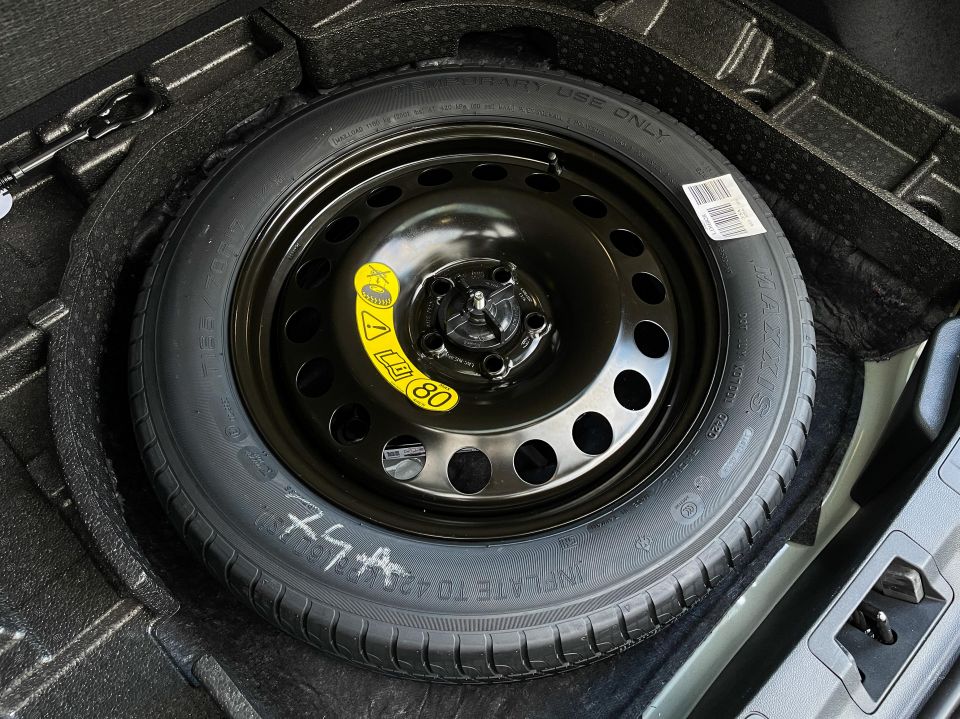

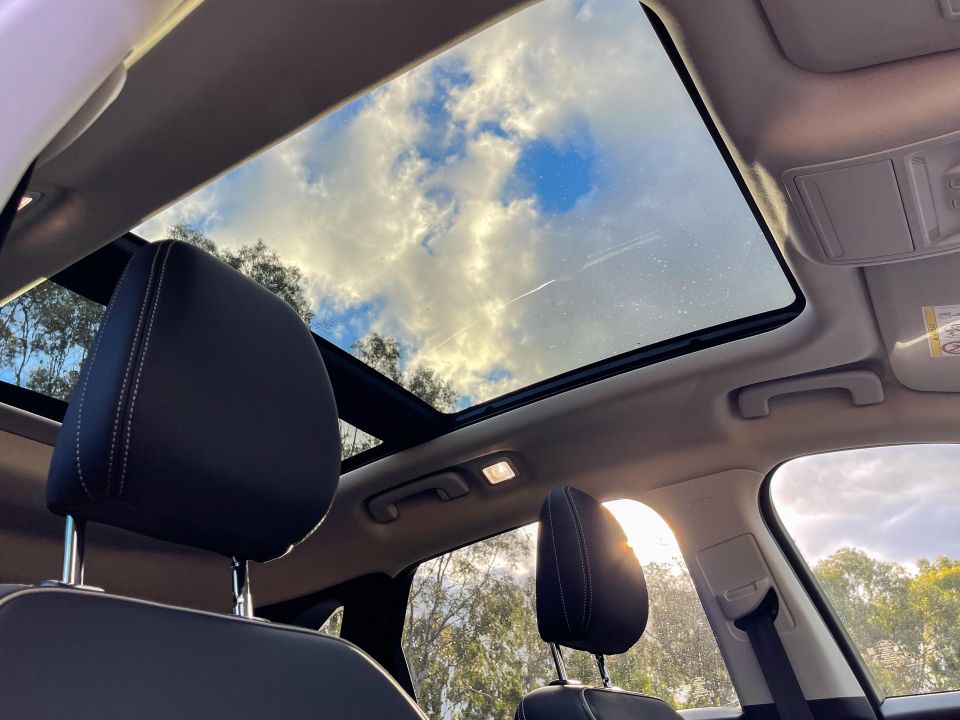
The Vignale’s standard panoramic sunroof also lets plenty of light in and helps to make the cabin feel a little more spacious, and the kiddies will enjoy skywatching or stargazing on longer drives.
Further back again, the Escape offers a healthy 556 litres of cargo capacity in five-seat configuration, expanding to 1478L with the second row folded flat.
Under the boot floor there’s a space-saver spare wheel.
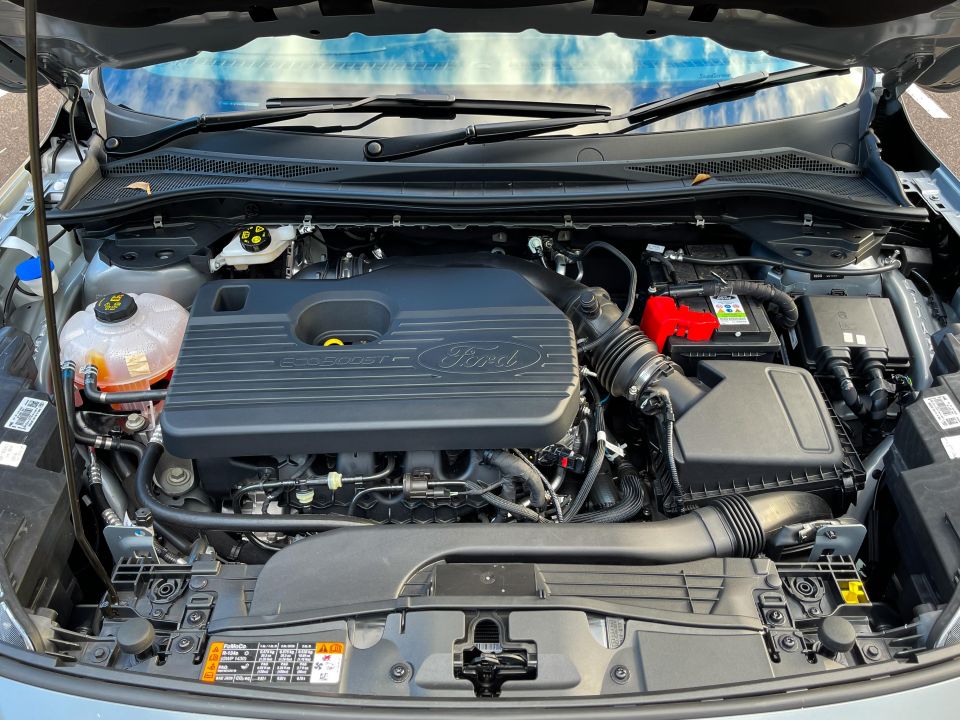
The Vignale FWD on test features a 2.0-litre EcoBoost four-cylinder turbo petrol fitted to most of the Escape range, driving the front wheels via an eight-speed automatic transmission.
Outputs are quoted as 183kW (@5700rpm) and 387Nm (@3100rpm), making the Escape one of the class leaders in terms of engine outputs. As noted earlier our test car is front-wheel drive, though on-demand all-wheel drive can be had for an additional $3000.
Combined fuel consumption is rated at 8.5L/100km, with 95 RON premium unleaded required as a minimum. We actually managed an indicated 8.3L/100km over 1140 kilometres over a mix of highway driving and suburban errands.
The Escape’s fuel tank measures 57 litres, and there’s idle stop/start tech fitted.

Where expert car reviews meet expert car buying – CarExpert gives you trusted advice, personalised service and real savings on your next new car.
We had plenty of time behind the wheel of the Ford Escape Vignale over the Christmas break, including a return trip from Melbourne to the border town of Yarrawonga-Mulwala.
We’ve previously praised the Escape’s open road touring capability, punchy engine performance, and intuitive driver assistance tech in real-world use. Not much has changed on that front.
Even on optional 20-inch wheels, the Escape is a quiet and comfortable place to spend time whether you’re puttering around town or touring between capitals.
Compared to lower grades on smaller wheels, yes the ride is a touch firmer and yes there’s a little more road noise from the lower profile rubber. Even with both compromises, the Escape is far from the worst in the segment and its European genetics are evident in the high-speed stability and planted feel.
The 2.0-litre engine has a lot of grunt, and the fact peak torque doesn’t come on tap until 3000rpm means it’s a bit more linear and less wheel-spinny than you might expect, but can also feel a little boosty as you hit that peak torque band.
Under hard throttle though, the thrashy, hissy engine note isn’t music to your ears – keep your inputs gentle.
Compared to the myriad lower-powered engines at this price point – particularly the naturally-aspirated ones from Asian brands – the Escape feels muscular and more than up to the task for freeway-speed overtakes.
The eight-speed auto is generally smooth and decisive, settling nicely into its final ratios at a cruise and never seeming confused or slow when a quick downshift is required. It can, however, be a little lurchy off the line and into second.
In town the Escape’s cabin feels well-isolated from the lumps, bumps and noises around you, though the bigger wheels of the Vignale mean it’s not as comfy as the base model. Again, the quiet and refined ambience has a European vibe to it while the high driving position and big glasshouse means outward visibility is great.
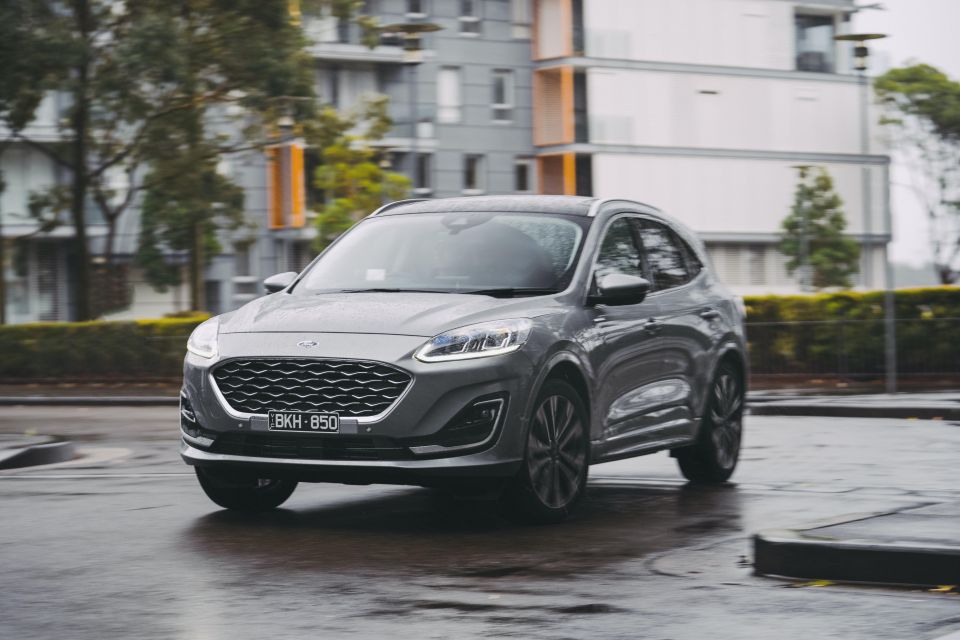
Further, the standard blind-spot monitoring and rear cross-traffic alert systems bolster the driver’s view, though there’s no 360-degree camera like you’ll find on a number of rivals.
The adaptive cruise control with lane centring also worked a treat during our road trip, keeping the Escape comfortably between the white lines without feeling intrusive or overbearing.
While previous highlights continue, same goes for gripes.
We’ve already noted the lack of bolstering for the front seats, which is most noticeable when going around corners. The buzzy engine note isn’t great either, and the steering lacks the sporty, direct feel we’ve come to love.

Unlike the smaller Puma and Focus – the latter of which shares the Escape’s C2 architecture – the Escape’s steering feels a tad numb and uncommunicative, which is even more noticeable given the well-sorted chassis and grippy handling characteristics of the Escape.
You can address this somewhat by engaging Sport mode, which adds a bit more artificial weight while also putting a cool dark mode on the 12.3-inch instrument display, but it holds gears and makes the drivetrain less smooth.
We imagine the upcoming Escape ST-Line PHEV will be better suited to urban driving, with its ability to travel around 50 kilometres in EV mode, though that won’t be available until at least the end of this year.

The Escape is covered by a five-year, unlimited-kilometre warranty, and includes the Ford Service Benefits program which includes roadside assistance through complementary auto club membership, yearly satellite navigation map updates, and capped-price servicing.
Scheduled maintenance is required every 12 months or 15,000 kilometres, whichever comes first. Each visit for the first four years or 60,000km is capped at a competitive $299 – totalling $1196 for the life of the program.
It’s certainly on the lower side of the segment in terms of ongoing costs, but it can’t quite match Toyota’s sharp $215 services for the RAV4.
The CX-5, however, will cost around $1402 over four years and also has shorter 10,000km intervals.

Buy your new car without the stress. It's fast, simple and completely free.

Great service from Travis and team, second time I have used this business would not hesitate to recommend them to anyone
Craig C.
Purchased a Ford Ranger in Sunshine Coast, QLD
CarExpert helped Craig save $7,224 on his Ford Ranger, now let us save you on your next new car.
Get your BEST priceThe Escape Vignale presents an interesting alternative to the established set of mid-size SUVs – mainstream and premium-branded.
It looks the part, has a features list to match, and is one of the more practical vehicles in the class. The Ford Escape will also out-perform just about any rival in a straight line and give hot hatches a reason to sweat.
At a smidgen under $47,000 before on-roads for this front-drive version, it’s pretty good value. However, it’s not quite as upmarket inside as a CX-5 Akera or Tiguan Elegance/R-Line, let alone a Q3 or X1, and not everyone will be drawn to the Ford badge.
That said, the Ford Escape Vignale deserves to be far more than an also-ran in the mid-size SUV class, so it’s definitely worth having a look if you’re in the market for a well-appointed medium SUV.

Click the images for the full gallery
Where expert car reviews meet expert car buying – CarExpert gives you trusted advice, personalised service and real savings on your next new car.
James is an automotive journalist based in Melbourne, Australia. Before joining CarExpert.com.au in 2020, James has worked at leading auto media outlets including Carsales and CarAdvice, as well as at Pulse agency for Ford Australia's communications team. In 2019 James made Mumbrella's 'Top 20 most prolific web authors in Australia' list after publishing 1,360 articles between March 1, 2018 and February 28, 2019 for CarAdvice. James is also an Ambassador for Drive Against Depression – an Australian charity whose mission is to support mental wellness through the freedom of driving and a shared love of cars.


Max Davies
6 Days Ago


James Wong
4 Days Ago


James Wong
4 Days Ago


Max Davies
3 Days Ago


Marton Pettendy
20 Hours Ago


Josh Nevett
19 Hours Ago